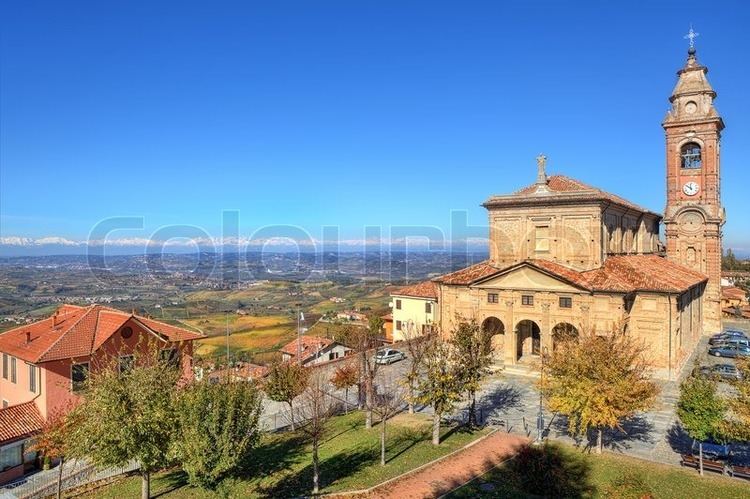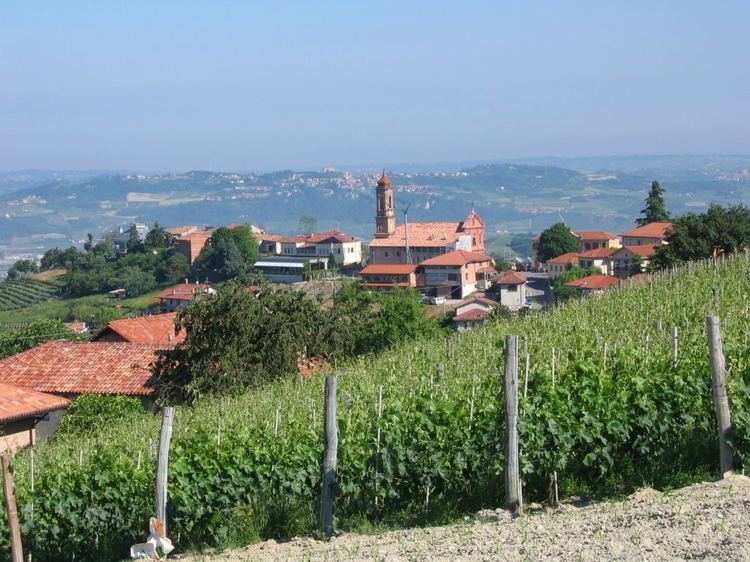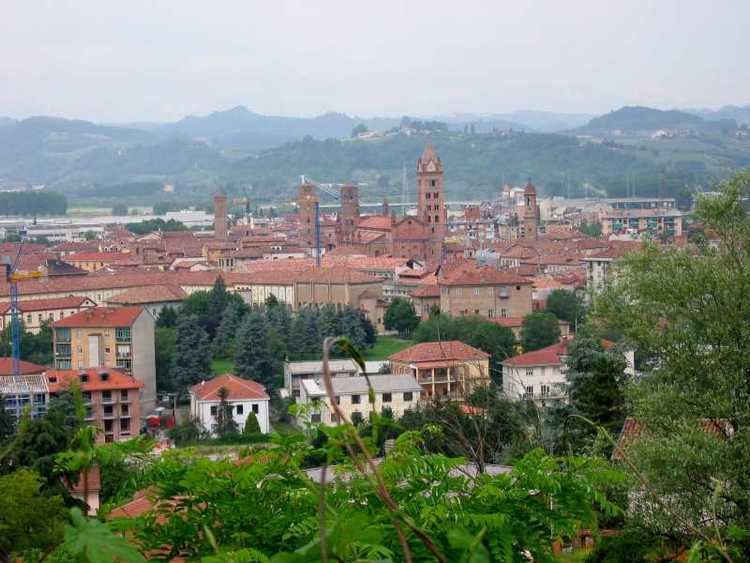Country Area 54 km2 | ||
 | ||
Mayor Maurizio Marello (since June 23, 2009) | ||
Map of Alba, Piedmont
Alba (Latin: Alba Pompeia) is a town and comune of Piedmont, Italy, in the province of Cuneo. It is considered the capital of the UNESCO Human Heritage hilly area of Langhe, and is famous for its white truffle, peach and wine production. The confectionery group Ferrero is based there.
Contents
- Map of Alba Piedmont
- Vincafe winebar place to stay alba piemonte italy
- Ceretto art food and barolo
- History
- Main sights
- Economy
- Climate
- Sport
- Quality of life
- Notable natives and residents
- Twin towns Sister cities
- References

Vincafe winebar place to stay alba piemonte italy
Ceretto art food and barolo
History

Alba's origins date from before the Roman civilization, connected probably to the presence of Celtic and Ligurian tribes in the area.
The modern town occupies the site of ancient Alba Pompeia, the name given after being officially recognized as a town by the Roman consul Gnaeus Pompeius Strabo while constructing a road from Aquae Statiellae (Acqui) to Augusta Taurinorum (Turin). Alba was the birthplace of Publius Helvius Pertinax, briefly Roman emperor in 193.
After the fall of the Western Empire, the city was repeatedly sacked by Ostrogoths, Burgundians, Byzantines, Lombards, Franks, Hungarians and Saracens. In the 11th century it became a free commune (or city-state) and was a member of the Lombard League. Montferrat and the Visconti fought over the town; later it became a possession of the Gonzaga. Charles Emmanuel I of Savoy conquered it twice, while later France and Spain battled for its possession. The Treaty of Cherasco (1631) assigned Alba definitively to Savoy. During Napoleonic Wars, it was part of the Republic of Alba (1796) and of the Subalpine Republic, both French clients, before being annexed to the French Empire in 1802. It was an arrondissement center in firstly Tanaro department between 1802-1805, later in Stura one between 1805-1814 before liberation by Austrian troops. It was returned to Kingdom of Sardinia (Duchy of Savoy's name after gaining Sardinia in 1720) in 1814.
Alba won a Gold Medal for Military Valour for the heroic activity of its citizens in the Italian resistance movement during the course of World War II. On 10 October 1944, the town was liberated by partisans who established a Republic of Alba which for a few weeks was able to maintain its independence from the Fascist Republic of Salò. The republic lasted to 2 November 1944, when Republic of Salo retook it. It was finally liberated by French troops on 2 May 1945.
Main sights
Of the Roman city, which had a polygonal form, parts of the fortified gate and remains of some edifices with marble and mosaics can still be seen.
Other attractions include:
The city museums include the F. Eusebio Municipal Museum of Archaeology and Natural Science.
Economy
In addition to traditional agriculture, Alba is a very important center of wine. In the area of Alba, in fact, there are 290 wineries that cultivate an area of 700 hectares (1,700 acres) of land, producing an average of 61,200 hL of wine annually.
The wines of Alba are among the most renowned in Italy and are divided into:
The city has a thriving economy, boasting the confectionery industry's world-renowned Ferrero, the publishing house Società San Paolo and the textile firm Miroglio.
The town also houses the largest cooperative credit bank of Italy, by number of partners, the Banca d'Alba, and the international food chain Eataly. UniEuro, the Italian chain of stores specializing in household electrical appliances and acquired by Dixons Retail in 2002, was also established in Alba.
Alba is also famous worldwide for its white truffles, and its annual Truffle Festival.
Climate
According to the Köppen climate classification, Alba has a humid subtropical climate which is moderated by the proximity of the Mediterranean sea. Its winter are warmer, January is usually 5 °C (41 °F), and its summers are hot, where temperature can reach 35 °C (95 °F). Rain falls mostly during the spring and autumn; during the hottest months rain is less common, July with 43 mm (2 in) and August with 51 mm (2 in). During November and December, the town of Alba can be prone to fog.
Sport
The town’s football club, A.S.D. Albese Calcio has been in existence since 1917.
Quality of life
In 2009 Alba was the 1st Italian Comune with more than ten thousands inhabitants for Quality of life.
Notable natives and residents
Twin towns — Sister cities
Alba is twinned with:
